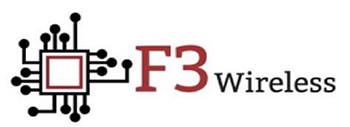F3 Wireless Offers RF Design Schematic Reviews
Radio receiver performance issues are the most common and challenging problems to fix in developing wireless products. When your receiver isn’t working the way it should, your product is “deaf”, and the useful range of the radio communication link is dramatically reduced. This is one of the most common causes of market acceptance failure for wireless products. “The range on this wifi product is awful!” These problems are often situational, use-case, and time-dependent making them time-consuming to diagnose.

Three basic areas of receiver performance must be considered: noise, static attributes, and dynamic attributes. A radio receiver must detect signals in the presence of noise. The most common failure mechanism is RF emissions from the rest of your products' electronics that land in-band to your receiver’s channel. When your receiver antenna is physically very close to those electronics, a memory bus, a switching power supply, or a wide array of other common system elements, it only takes a very small signal to be stronger than the desired signal you’re trying to receive. Whichever signal is stronger is what your receiver will hear. These interference signals can be radiated into the antenna or conducted through parts of the receiver circuit.
Another major issue is the noise in your receiver’s band, but not on every channel the system uses. This can cause specific channels to have worse receive sensitivity than others. Depending on how the radio system uses those channels, this can result in the device working well sometimes and poorly at others.
Finally, the other common failure mode is called front-end desensitization. This is caused when a very strong RF signal is present that is seen by the first Low Noise Amplifier. The signal can be out of the band used by the radio in question, but it’s strong enough to cause the amplifier to go into saturation. Even if the interfering signal is later filtered out in the receiver, the first LNA being in saturation prevents amplification of the desired signal, and so the effective noise figure, and thus receive sensitivity is greatly reduced. This situation is common when transmitters are used near lower quality active GPS antennas that either have no band select filter or have the filter AFTER the LNA. Any time your transmitter turns on, your GPS reception stops, which can lead to much poorer GPS accuracy or even no GPS reception at all.
The MS02 MicroService is a service where an F3 Wireless RF engineer reviews the schematics and provides feedback via a written report based on their extensive experience in dealing with radio receiver interference. The report features circuit-by-circuit feedback for each section of the schematic with callouts of potential failure modes, recommendations of changes to avoid problems in the first place, allow for quick and efficient test and mitigation as well as feedback on the design for test, manufacturability, and performance.

Have questions or comments? Continue the conversation on TechForum, Digi-Key's online community and technical resource.
Visit TechForum





